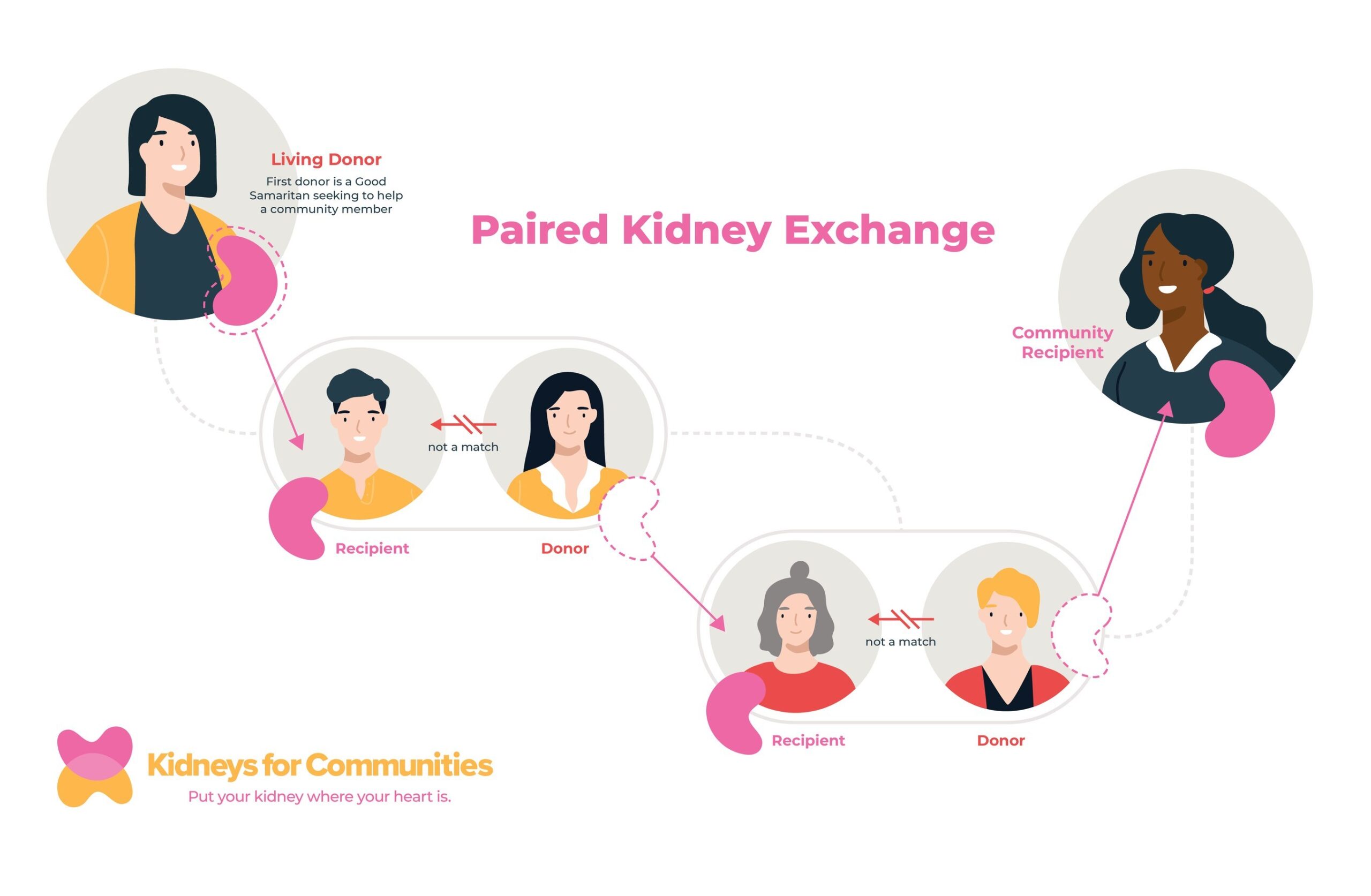One of the most common questions asked of Atul Agnihotri, a former senior global leader at a Fortune 500 company, is, “Why did you abandon your successful 20-plus-year career to work for a nonprofit?”
“I joined the 100,000 people in the U.S. waiting for a kidney transplant,” answers Agnihotri, who now serves as CEO of Kidneys for Communities.
In December 2015, Agnihotri was diagnosed with end-stage renal disease. He went from being diagnosed to receiving a transplant within three months in a series of what he calls miracles. Agnihotri understands that many others who were also on a waiting list were not as fortunate.
Today, Agnihotri is tackling the living kidney donor shortage crisis. As someone who built his career solving global business issues, he is an outsider and is turning to other outsiders to help find a solution.
“While the work that many have done to increase deceased donor registration is nothing short of Herculean, we have been fighting the shortage of kidney donations with one hand tied behind our back,” says Agnihotri. “While it remains important, why are we focusing the majority of attention, education and funds toward increasing the deceased donor registry only? It’s about time we focus on living kidney donation.”
Agnihotri leads Kidneys for Communities, which provides the tools to educate, generate awareness and create a connective dialogue among community members to link up prospective living kidney donors and those in need of a kidney within their community.
For example, if a person wishes to donate a kidney to help a fellow officer in their specific law enforcement association, then they can be entered into a pool and their kidney donation can begin a chain of paired exchange transplants that ends with a compatible transplant to a member within that association. While the donation is still anonymous, the donor guides where their kidney goes, even though they don’t personally know the recipient.
The kidney donor shortage may not seem like an urgent crisis. After all, there are daily stories of community compassion, such as the teacher who donated a kidney to another educator prior to ever meeting in person. While this power of connection and shared interest is a familiar story, kidney donation is often left to happenstance or individual outreach efforts. While living donor kidney transplants happen every day, only 3% of those transplants happen because of altruistic donors — that is, people who donate a kidney without knowing the recipient. Strangers helping strangers, while needed, is not so common.
According to the U.S. Organ Procurement and Transplantation Network, there were only 5,971 living donor kidney transplants performed in 2021. Another 18,699 transplants came from deceased kidney donors. Altogether, this is 24,670 kidney transplants in 2021.
“Do the math,” says Agnihotri. “How do these numbers from OPTN impact the more than 100,000 people who are in immediate need of a kidney transplant? We need all hands on deck to fight the kidney shortage. While funding and educational outreach for deceased kidney donations are important, they should be only part of the equation.”
Agnihotri believes that we need a collective effort to solve the kidney shortage crisis. Kidneys for Communities joins the many efforts to increase living kidney donations already in play.
Economics can save lives
Economist Alvin Roth won a Nobel Prize in 2012 in part for work he and his colleagues did to improve the odds of finding living kidney donors, which led to an algorithm that matches combinations of non-directed and/or incompatible direct donors by performing paired exchanges. This algorithm creates an extended string of kidney transplants that connects a series of prospective donors and recipients.
Support from both sides of the aisle
In 2021, U.S. legislators from both sides of the aisle took action by supporting the Organ Donor Clarification Act, which aims to reduce the financial barriers that impact potential living donors, such as compensation for lost wages and medical expenses. This is a smart start that builds on previous living kidney donation efforts.
Addressing health disparities in organ donation among minority communities
African Americans are almost four times as likely as white Americans to develop kidney failure. While African Americans make up about 13% of the population, they account for 35% of the people with kidney failure in the United States, according to the National Institute of Diabetes and Digestive and Kidney Diseases. OneLegacy’s “Connecting the Dots” is a series of virtual town hall events that work to bridge the gap between the demand for organ transplants and the limited number of donated organs in minority communities.
The power of our communities
Leveraging the compassion of communities, Agnihotri points to the fact that 96% of all living donors either knew or had an indirect relationship with the recipient.
“When we look into who has historically chosen to be a living kidney donor, we know that most living donors are not completely random,” says Agnihotri.
Kidneys for Communities is asking leaders of membership-based associations to sign up for its “Put Your Kidney Where Your Heart Is” toolkit, which empowers members through a turnkey living kidney education program.
“As new societal, technological and medical developments continue to evolve, it is essential that we review new concepts from all fronts,” says Roth. “Considering one of the most powerful connections — community — and bringing together people who want to help with those who need help is the type of innovative approach that could put an end to the living kidney donor shortage.”
About Kidneys for Communities
Kidneys for Communities is a nonprofit that partners with organizations to impact the lives of their members by offering resources about living kidney donations to their membership, increasing the chances of a donor directing a gift-of-life kidney to a fellow member in need.
The community-directed donation model allows potential donors who belong to membership-based associations to direct their lifesaving donations based on a community they want to support.
Addressing the shortage of living kidney donors through proactive community outreach programs, Kidneys for Communities developed the first-ever national community-directed donation program. The program unlocks connections created through membership-based communities with the goal of increasing the number of living kidney donors in the U.S.
The leadership team includes innovative leaders, kidney donors, social workers and medical experts in the fields of nephrology and renal transplantation — all of whom have seen this disease up close and are committed to making an impact. Learn more about donating or connect directly with the Living Donor Connections team at www.kidneysforcommunities.org.
SOURCE Kidneys for Communities

